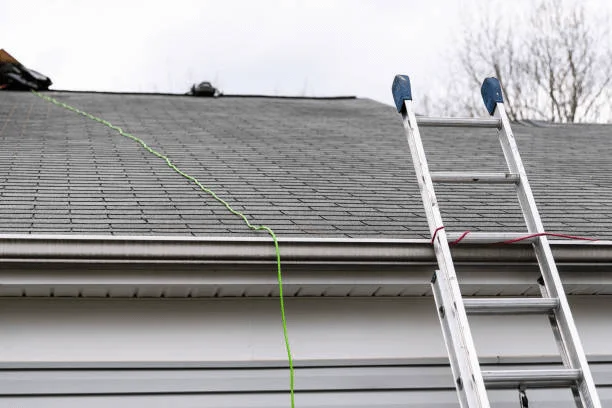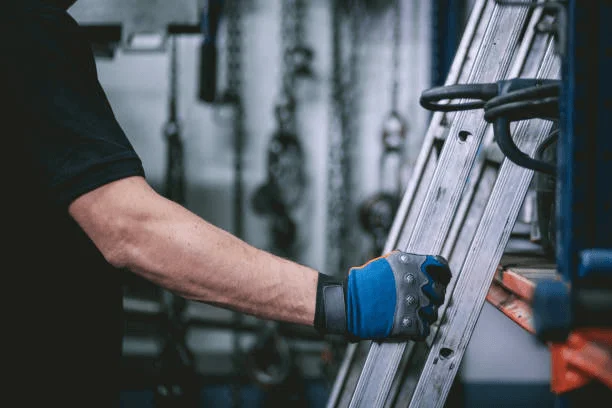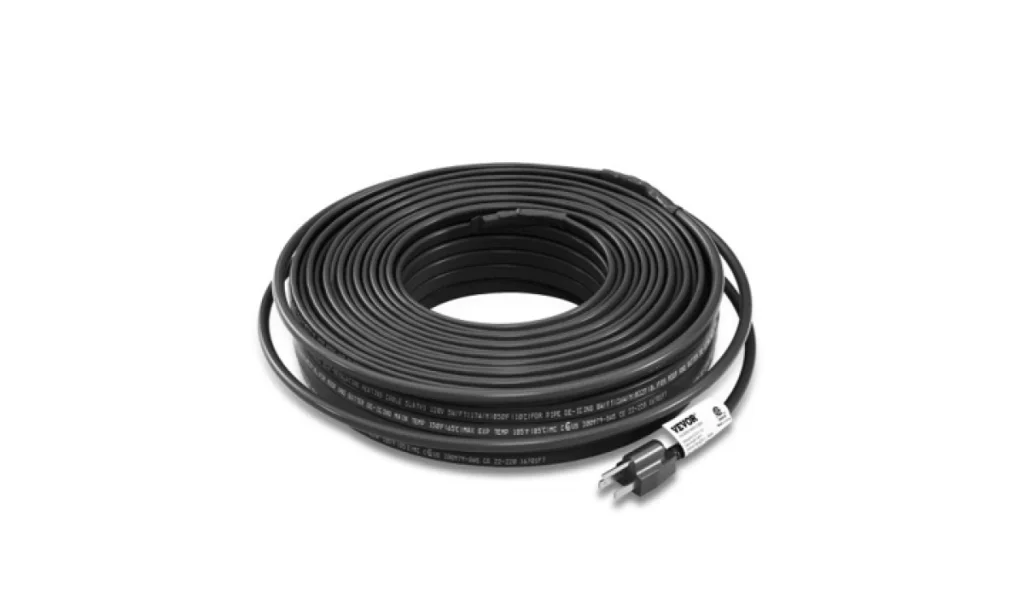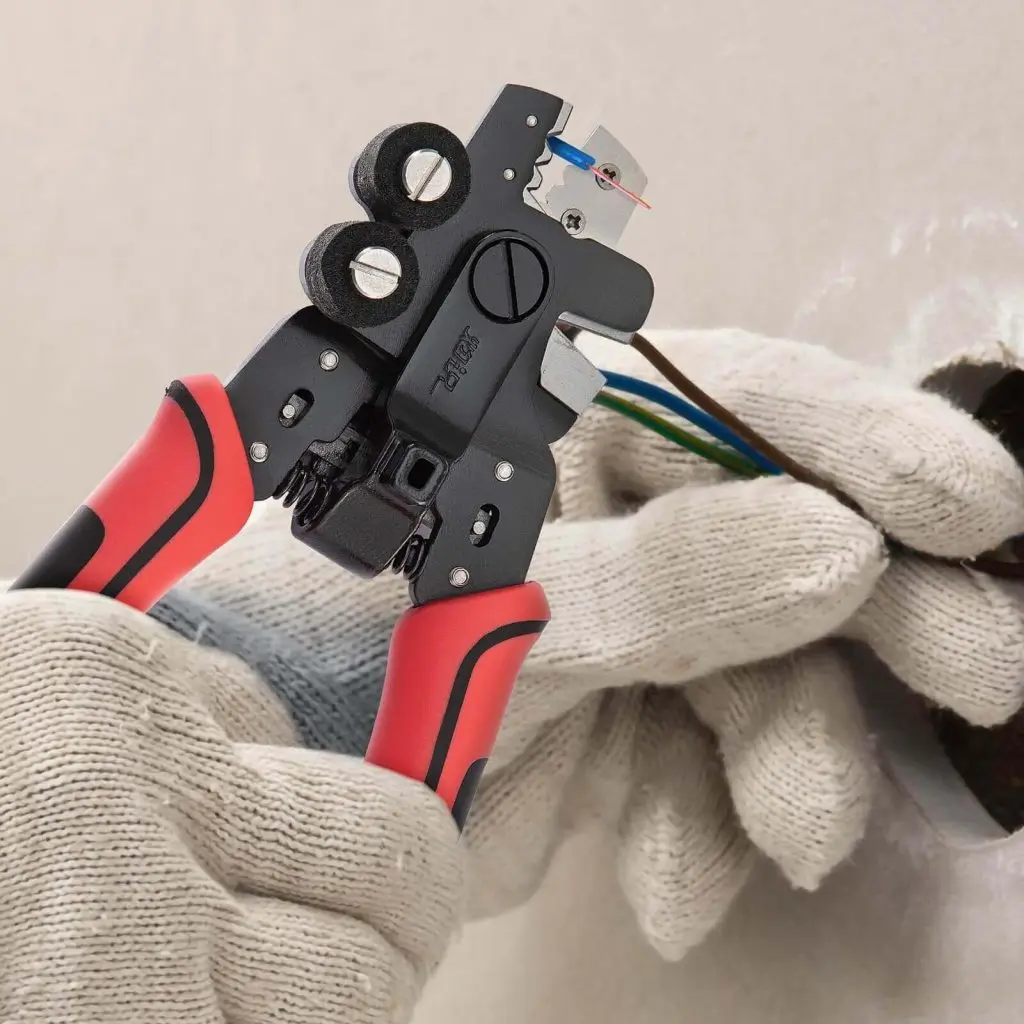Wondering just how safe are telescoping ladders for you? Dozens of people are actively finding answers to this golden question, especially with the increasing impact of technology and the gradual phasing out of traditional ladders.
Telescoping ladders are the epitome of convenience, space management, and flexibility, offering a modern and far better aesthetic approach to climbing and mounting items. However, major safety concerns exist, like how they’ll fare on unsteady grounds or possible injuries when extended beyond accepted safety limits.
But don’t worry—this guide will provide a comprehensive answer to your curiosity about the safety of telescoping ladders, including helpful insights on VEVOR ladders and why you should totally consider getting them for your needs.
Table of contents
How Safe Are Telescopic Ladders? The Unvarnished Truth
There are some strong opinions on just how safe are telescopic ladders. While one side of the divide is fans of this object, the other side is somewhat wary of possible injuries and technical mishaps that may happen to these ladders during usage.
Safety Standards: Are They as Regulated as Traditional Ladders?
One of the subjects of worry for users of telescoping ladders borders on regulatory issues and how safe are telescopic ladders in that regard, especially with the influx of non-certified telescoping ladders in the market. Per the Ladder Association’s law, every traditional or telescoping ladder must be EN131 Part 6 certified.
EN131 Part 6 contains a list of criteria that any telescoping ladder must fulfill at the point of testing to certify that they are suitable for use by anyone. These specifications include:
- A telescoping must come with a new safety closure system that slows the ladder’s descent and protects hands from injury
- Rungs must be 50% larger than standard telescoping ladders and angled for needed grip and ease.
- The rung must include a safety lock and release indicator and an ergonomically designed locking mechanism for comfort and ease of use.
- Over-molded feet with solid synthetic rubber for a studier grip on the ground
- Any ladder longer than 3 meters must come with a stabilizer bar.
Common Concerns
So, are telescoping ladders safe?
These safety standards address the issues of most telescoping ladder owners, which include pinch hazards during extension/retraction, stability when in use on uneven ground, and weight capacity problems since people of all ages, sexes, statuses, and weights need a solid ladder to do stuff around the house.
VEVOR’s Stand
VEVOR is your one-stop for safe and efficient telescoping ladders. The brand’s attention to detail and commitment to safety for its users is enviable, and that’s why they’ve emerged as one of the most preferred telescoping ladder solutions on the market, but we’ll go into the details much later.
Telescoping Ladder Anatomy 101: What Makes Them Tick
Exploring the world of telescoping ladders is incomplete without analyzing their basic parts and understanding just how they function. Let’s get into it.
Basic Parts
When you see a telescoping ladder, the most essential components it should have are rungs, locking mechanisms to prevent the ladder from collapsing while in use, and feet and rails.
If your telescoping ladder is missing one or more of these, you should definitely not purchase it, especially now that inferior ladders have saturated the market, which is why VEVOR should be on your next purchase list.
How Extension/Retraction Works
Extension and retraction are the two basic ways to use a telescoping ladder before and after your task. As a newbie, these terms may sound complicated, but we’ll help you simplify them.
When extending your ladder, you must first hold it firmly in an upright position. Then, step on the bottom rung while using both hands to remove the top rung’s connector.
Make sure you pull each rung to its full length before extending the next rung (pay attention to the locking mechanism and ensure it’s engaged). The fourth rung down from the top rung is the perfect spot for you to stand when using any extension ladder.
Retraction comes when you’re done using the ladder and need to store it. To avoid injury, avoid placing your hands between the rungs. Instead, support the ladder by the couplings under the rungs while engaging the latches and putting your thumb on the lock buttons, which you don’t need.
Press the lock button one after the other as the upper stage of the ladder gradually drops, repeating this for each step until all the rungs are relaxed. Then, secure your retracted ladder with a tightly fastened strap.
Materials
Telescoping ladders are usually made of two materials: aluminum and fiber. Each has its pros and cons, which we’ll mention below.
Aluminum
| Pros | Cons |
| Strong, sturdy, durable | Poor conductor of electricity |
| Lighter and more accessible to move than fiberglass ladders | Prone to attacks from weather elements (rusts, weak joints) |
| Portability and flexibility | |
| Suitable for heavy-duty industries and higher heights |
Fibre
| Pros | Cons |
| Stronger than aluminum ladders | It’s challenging to handle by one person as weight increases with height. |
| Durable due to weather-resistant properties | Heavier than aluminum, hence difficult to move |
| Commonly used for step ladders and smaller height jobs like fence, roof repairs, and painting. |
7 Essential Tips for Using Telescoping Ladders SAFELY

The following guidelines will help you maximize your telescoping ladder usage and, most importantly, ensure a safe, secure, and smart experience.
Choose Wisely
Eyes on the prize, they say. At your point of purchase, when it comes to telescoping ladders, you should always go for reputable and trusted brands like our dear VEVOR telescoping ladder, and any other brand you decide to stick with must have the EN 131 certification.
Inspect Before EVERY Use
How safe are telescopic ladders?
Look through every part painstakingly for loose parts, surface wear, missing rungs, rails, rust, bends, and lack of lubrication. Never compromise on a stern inspection of your item before usage; it will save you all the stress in the long run.
Level Ground is Key
Make sure that the surface you’re placing the ladder on is stable, flat, and solid. Soft or uneven ground is a no-no for telescoping ladders, as they can fall or sink. However, if you’re left with no other option than a slippery floor, you can add rubber feet on the soles of your ladder to add more stability.
Extend/Retract With Care
Set up and collapse your telescoping ladder with utmost care. Do not move too fast, as you can mess up the mechanism and put the ladder’s safety at great risk. Do not attempt to adjust the rungs while extending the ladder, as it’ll obstruct its locking function.
Respect the Weight Limit
How safe are telescopic ladders with different weights?
Telescoping ladders have specific weight requirements and limitations, like the VEVOR telescoping ladder, which has a load capacity of up to 400 lbs. Users are strongly advised not to exceed the recommended weight limit by 1kg. Abiding by these rules is necessary, as ladder injuries can be fatal.
The 3-Point Rule
The 3-point rule is straightforward yet essential in the ladder world. Whether using a telescoping or traditional ladder, users are advised to have either two hands and one foot or one hand and two feet in contact with the ladder rungs or side rails when ascending or descending.
Should there be a quick break in transmission where the hands are unavailable for support, the user can use their body and two feet as a point of contact to ensure stability and even distribution of the body weight.
Storage Matters
Are telescopic ladders safe when stored properly?
Proper storage of ladders is essential to extend their shelf life and ensure optimum performance. Before retracting and storing, wipe down the rails to eliminate debris and loose particles that can clog the rails’ movement and rust the safety latches on the telescoping ladder.
Never store your ladder in a damp place. Aluminum and water or humidity are not best friends—regular contact with moisture will cause your telescoping ladder to rust and become less efficient. You should also keep your ladder away from places where it could get hit by another weighty object.
VEVOR Telescoping Ladders: A Safe Choice

Are telescoping ladders safe?
VEVOR telescoping ladders are the safest choice for your home and field use, and we have proof to back up our claims below.
Safety Certifications and Standards
These ladders have passed the ANSI and N131 tests in compliance with industry standards to provide you with a long service life and ensure quality performance. Most importantly, you can use your ladder with the assurance that you have a worthy partner by your side.
Quality Materials and Build
VEVOR telescoping ladders are made from aviation-grade aluminum alloy with plastic interface parts reinforced with nylon plastic to ensure the durable and robust reputation the VEVOR brand has held over the years.
User Reviews and Testimonials
The endless positive user reviews and testimonials on VEVOR’s website have alluded to the fact that this brand is a safe choice for your needs. They emphasize its strength, impressive extension range, and portability to ensure easy movement.
“I LIKE THE LADDER A LOT. IT WAS PERFECT TO GET KAYAKS UP ON THE ROOF OF MY HIGHROOF VAN. THE LADDER WAS STURDY AND DID NOT SLIPE. WHAT WAS REALLY NICE IS, IT EASILY TELESCOPED UP AND DOWN, THE LADDER FITS EASILY ON THE WALL INSIDE THE VAN. TOTALLY SATISFIED.”
When NOT to Use a Telescoping Ladder

Are telescoping ladders safe for use every time?
Yes, telescoping ladders are strong, modern, and multifaceted enough to work in any situation, but there are exceptions to their usage and conditions that can cause serious harm during use.
Electrical Work
How safe are telescopic ladders near electricity?
Telescoping ladders are made from pure aluminum, making them very prone to electrocution. Be careful not to place them near naked wires, on electrical fences, or in areas in direct contact with power sources. Electrocution can lead to severe injury for the user and also destroy the ladder itself.
High Winds
Are telescopic ladders safe for winds?
Due to ladders’ tendency to reach high places, it’s best not to use them during windy periods as stability issues may surface. The last thing you want is an unexpected wind to knock you and the ladder off, causing injury and damage to your ladder.
While some situations are unavoidable, you can use them for heights that don’t require much length during windy times. Always make sure the locking mechanism is active before climbing!
Tasks Requiring Overreaching
Do not use your ladder for tasks stretching the accepted extension limit. This is a terrible idea, as you may fall off the ladder or even break ladder parts in the process. Telescoping ladders are better suited for direct access tasks and should never attempt to place them on an extra platform for more reach.
Are Telescoping Ladders Safe?
Telescoping ladders are generally safe when used correctly and with caution, but risks abound if safety precautions are not followed. Beyond this, it’s essential to stick with a high-quality telescoping ladder that offers safety and stability while combining sterling features like rungs, locking mechanisms, non-slip rungs, and steady feet.
VEVOR telescoping ladders offer all the security and reliability you need during use. The brand emphasizes quality and fulfills all the specifications/ features enlisted in EN131 Part 6 of the Ladders Association. Visit their website to choose VEVOR and state-of-the-art telescoping ladders today. Plus, the user manual provides all the safety steps, so you’re never clueless.





